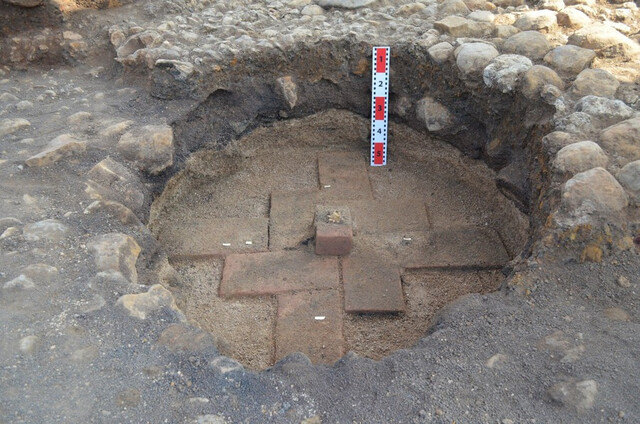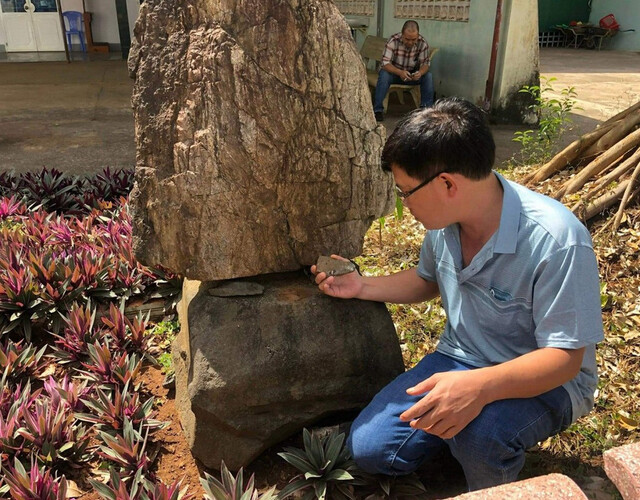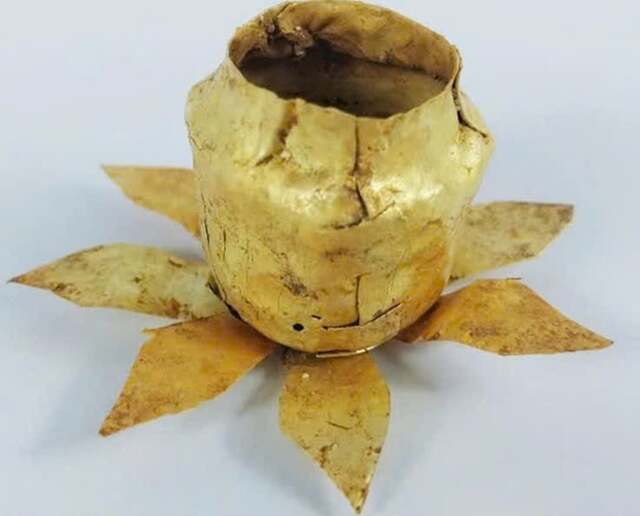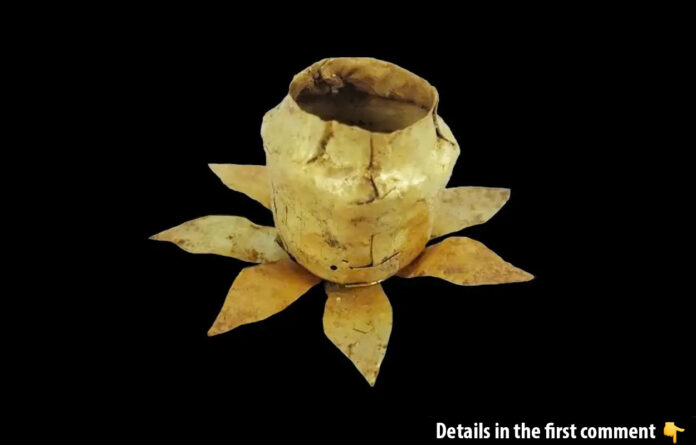Nestled in the tranquil lands of An Phu, Gia Lai, lies an extraordinary archaeological treasure trove that offers a glimpse into the spiritual and cultural life of the Chăm civilization. Recent excavations have brought to light remarkable relics and structures, shedding light on a forgotten Buddhist temple complex dating back to the 9th or 10th century. With its sacred pits, golden artifacts, and intricate architectural remnants, the site has become a focal point for understanding the ingenuity and spiritual richness of the Chăm people. But the story of An Phu is far from over, as tantalizing mysteries still lie buried beneath the earth.
The Sacred Pit: A Window into the Chăm Spiritual World
The second excavation at An Phu uncovered a central feature of the temple complex—a “Sacred Pit,” also known as the “Holy Repository.” This circular structure, built with bricks arranged in a swastika pattern, serves as the spiritual core of the temple, where offerings were placed during its construction. Inside, archaeologists unearthed a collection of votive objects that speak to the spiritual sophistication of the Chăm people.
At the heart of the pit, a golden rectangular plaque inscribed with ancient Buddhist script was found, its text referencing the philosophical concept of “Dependent Origination.” Resting above it was a Kamandalu vessel crafted from gold, elegantly placed on an eight-petaled lotus, also made of gold. Surrounding these items were dozens of artifacts, including glass beads and gemstones, emphasizing the ritual importance of the site. These discoveries not only underscore the religious devotion of the Chăm civilization but also their remarkable craftsmanship and cultural expressions.

Video
Take a journey through the Da Nang Museum of Cham Sculpture in Vietnam – watch the travel vlog to explore ancient artifacts and learn about the rich history of the Cham civilization!
Reconstructing the Chăm Temple Complex in An Phu
The findings at An Phu have allowed researchers to recreate the layout of the ancient Chăm temple. At its center stood a shrine with a 7-meter-wide base, encircled by walls that spanned 32 to 33 meters in diameter. This architectural ensemble reflects the unified design principles of the Chăm people, who intricately combined functionality and spirituality in their constructions.
Historical records suggest the temple complex was a Buddhist site, with its design and relics aligning with the religious practices of the 9th and 10th centuries. The use of the swastika, a symbol of auspiciousness in Buddhism, and the discovery of Buddhist texts highlight the temple’s role as a spiritual hub. The temple’s central location within the complex indicates its significance as a place of worship and community gathering.
A Larger Chăm Legacy: The Three-Site Complex

An intriguing detail from a 1928 report by the Viện Viễn Đông Bác Cổ revealed that the An Phu site is part of a larger architectural ensemble. According to the report, three Chăm structures were aligned along an east-west axis, spaced approximately 400 meters apart.
The Eastern Structure: Bomon Yan: Recognizable from its arches and unique joinery techniques, this structure showcases the advanced engineering of the Chăm people. The use of interlocking joints ensured the stability of the structure without requiring additional reinforcement—a testament to their architectural ingenuity.
The Central Structure: Ron Yan: Located on a raised mound and separated from the eastern site by a stream, Ron Yan featured a walled enclosure. Though its state has deteriorated over the centuries, it remains a significant landmark, with remnants of sculptures and artifacts hinting at its former grandeur.
The Western Structure: While the western structure is less prominent than the others, it holds potential for uncovering more about the Chăm civilization. Built on a small mound and surrounded by brush, it is thought to contain remnants of nearby architectural elements.
The alignment and proximity of these sites suggest a cohesive cultural and spiritual network, further emphasizing the importance of An Phu as a Chăm cultural center.

The Ongoing Mystery of the Third Structure
Despite extensive studies, the precise location of the third Chăm structure remains elusive. Clues from historical accounts and modern tools, such as Google Maps, suggest it could lie midway between the excavated An Phu site and the Phu Tho Church, another location of interest.
Father Nguyễn Hoàng Sơn’s assertion that the foundations of a Chăm tower lie beneath the Phu Tho Church adds another layer of intrigue. If verified, this connection could provide critical insights into the layout and significance of the An Phu complex. The potential discovery of this third site presents an exciting opportunity for archaeologists to piece together the broader narrative of Chăm history in Gia Lai.
Significance of the An Phu Discoveries
The relics and structures uncovered at An Phu provide invaluable insights into the Chăm civilization’s spiritual and architectural achievements. The temple complex, with its meticulously crafted artifacts and innovative design, underscores the Chăm people’s deep religious devotion and mastery of engineering.
Beyond their cultural significance, these discoveries contribute to a broader understanding of Southeast Asian history and the spread of Buddhism across the region. They also highlight the resilience and adaptability of the Chăm people, who created enduring monuments despite the challenges of their environment.
Preserving the Chăm Heritage of An Phu
As researchers continue to unravel the secrets of An Phu, the importance of preserving this archaeological site cannot be overstated. The findings here are not just relics of the past; they are cultural treasures that connect us to a rich and vibrant history. Efforts to protect and study these sites are essential to ensuring that future generations can appreciate the legacy of the Chăm civilization.
Collaboration between local authorities, historians, and cultural organizations will be crucial in unlocking the remaining mysteries of An Phu. With proper conservation and continued research, this site could become a focal point for understanding and celebrating the cultural heritage of Vietnam.
Conclusion
The excavations at An Phu have opened a fascinating window into the spiritual and cultural life of the Chăm civilization. From the Sacred Pit adorned with golden artifacts to the temple complex that stood as a beacon of faith, the discoveries reveal a story of ingenuity, devotion, and resilience.
While much has been uncovered, the mysteries of An Phu are far from fully revealed. As researchers delve deeper into this ancient site, they bring us closer to understanding the legacy of the Chăm people and their enduring influence on the cultural fabric of Southeast Asia. By preserving and studying these treasures, we not only honor the past but also ensure that its stories continue to inspire future generations.
